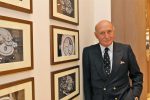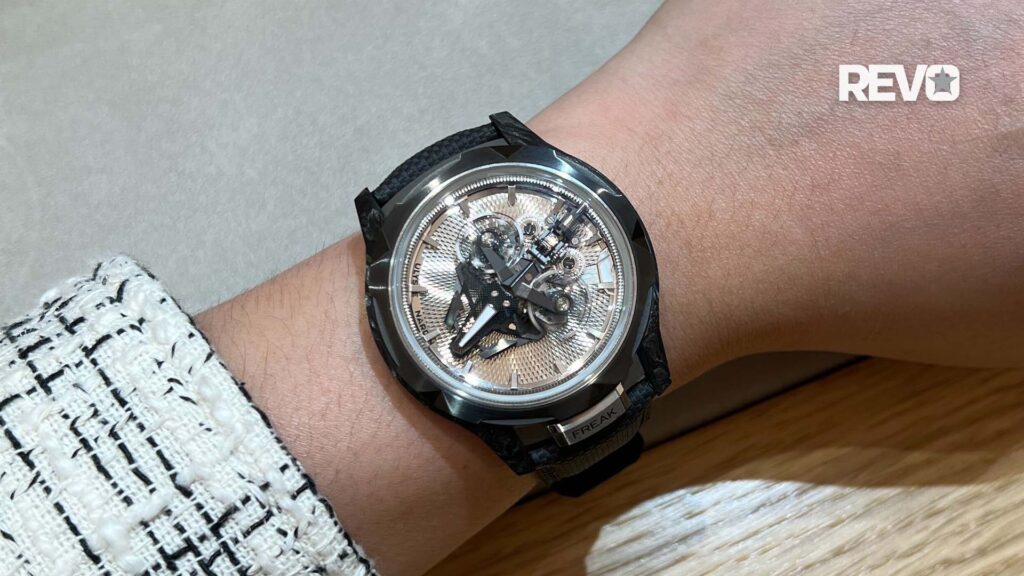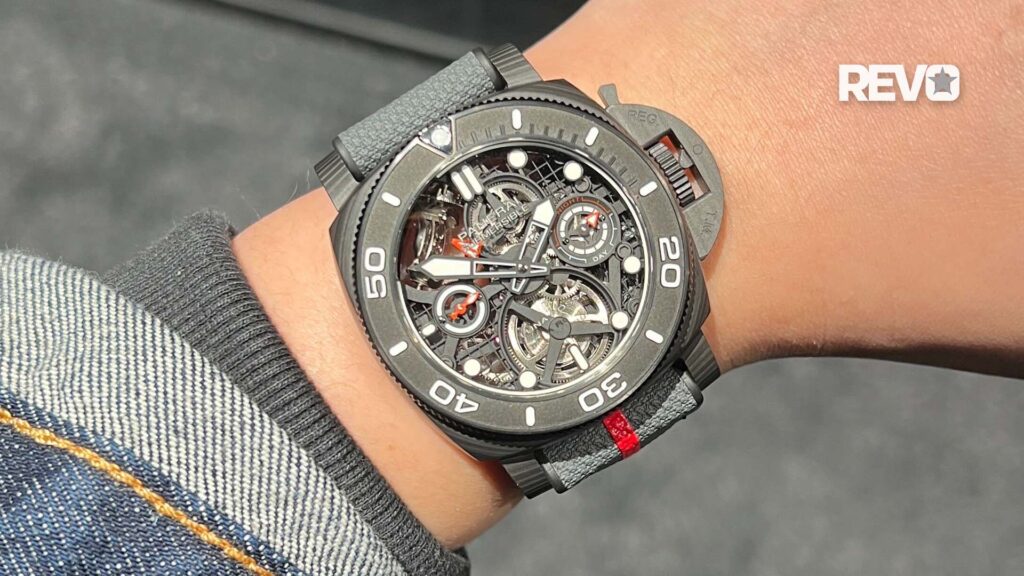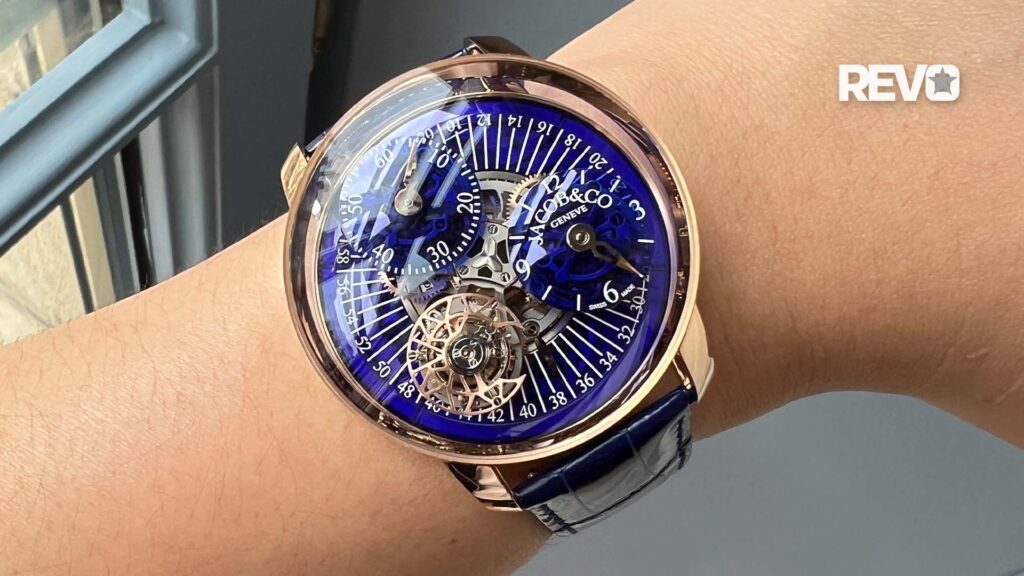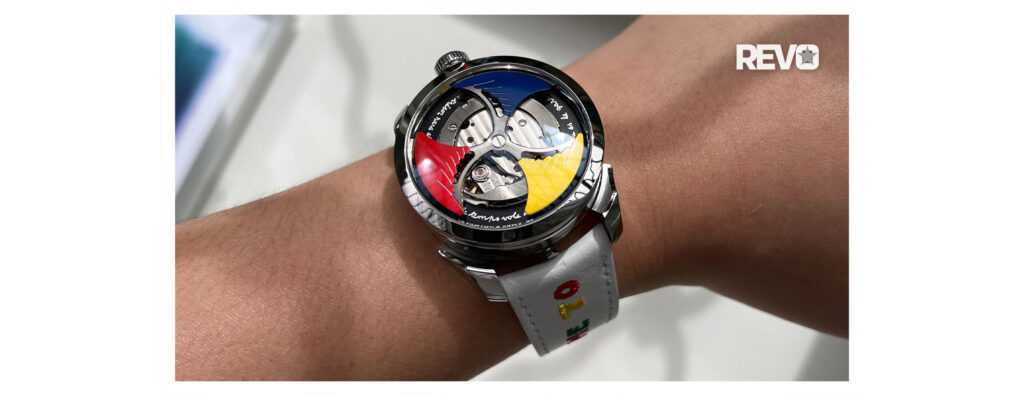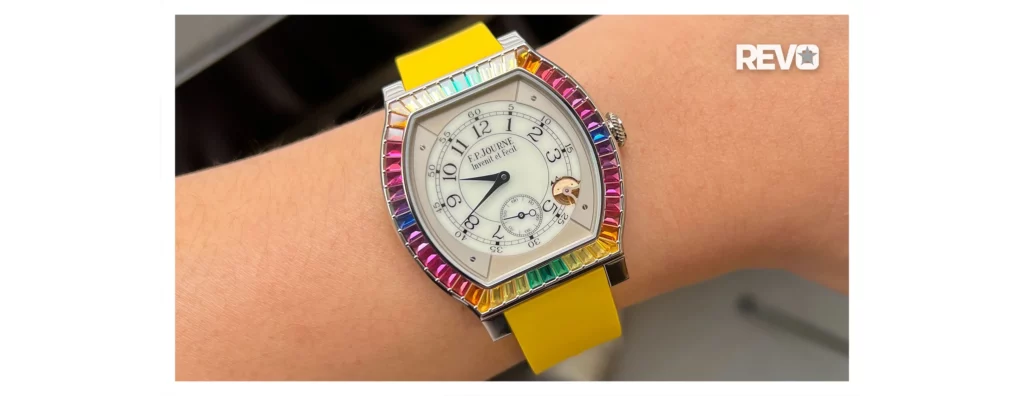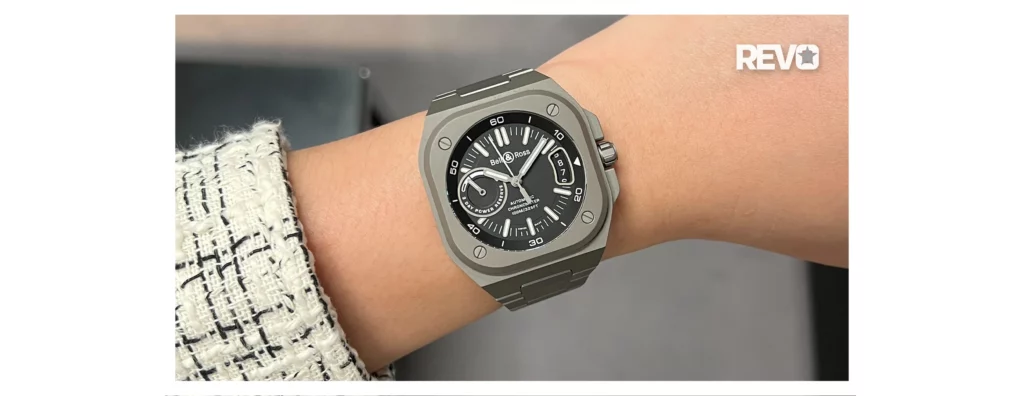News
The Future According to the Industry’s Movers & Shakers
Jérôme Lambert, CEO, Montblanc
Challenges:
One of the biggest challenges we face is to have the right watches with the right service when the market is fragmented. We have to be capable to elevate the level of performance and service, and know what fits where. We continue to have a global offer, but we have to work more on the fine-tuning and size of our collections in each market.
Reasons for optimism:
I am realistically optimistic or optimistically realistic. It’s never as good or bad as it seems. We have a very resilient business. I see how high the passion is for watches around the world; I meet so many people who are so enthusiastic about fine watchmaking.
Every 10 years, we have a shift of market appetite, underlining trends in watches. Every 10 to 15 years you have aesthetic, technical trends. Fifteen years ago, it was “Let’s all go to Asia”, with China’s growth, which was sufficient to boost many watch brands. That produced many positive trends, as our friends in Asia boosted métiers d’art, elegant watches, and these will remain strong. Now we are entering a time where you have more regional dynamics, and when a dynamic in a region is very strong, it can become a global trend (like black watches, big watches from the US and more). In 2017, it will be interesting to see if one region will be strong enough to force a trend, or if we will go with a more multifaceted approach. I am skeptical that one size can fit all, so I think we will have more diversity from the market expectation and more diversity from the maison.
Communication:
We have to bring the reality of the product directly into their hands. Direct interaction in brick and mortar, in addition to the digital connection, is very important. Everything in the digital world has a short shelf life. I don’t think the digital age of communication is over, but everything will be replaced.
Challenges:
As to the change in the use and perception of watches, our challenge will be to understand the attitude and desires of the millennial customer. That is, in my opinion, a very, very important challenge to master. We have been studying the millennial generation for some time. Nevertheless, we have to constantly innovate in order to be unique, different and the first.
Communication:
Small brands have to be innovative and well-structured in the distribution network. Innovation with no visibility is very difficult. They will have to be quite strong and have sufficient visibility in the distribution, besides being heavily active in social-media networks. We are shooting for “zero separation” from our customers, and we believe that it is the concept of the future.
Challenges:
A lot of watchmaking companies are currently facing a slowdown because of economic and political reasons. Even though we are facing tough times, we stay confident and positive, we trust our design and complications, and we know that we possess unique technical and design prowess.
Our objective has always been to be different from other brands. We work very hard with our dedicated watchmakers and passionate designers to design unique masterpieces and maintain our reputation of “Master of Complications.”
Reasons for optimism:
Next year will be a big year, as it marks our 25th anniversary. Every year, we introduce new watches that stand out with new designs, materials and complications. We’re working on several new models that will enable customers to enjoy fine-watchmaking complications while personalizing their timepieces. The new collection will be released at our exhibition, the “World Presentation of Haute Horlogerie” in January 2017.
Challenges:
I think the biggest challenge of the industry is differentiation. Our manufacture is completely integrated, which means that besides a few components, we design, we develop and we manufacture our entire production in-house. Only a few other brands can say so and this is really what makes us special.
Evolving tastes:
Our clients have evolving lifestyles — they want to live intensely and meaningfully, so we work to be creative, to be at the state-of-the-art of our craft. But we also have in our minds this idea that we manufacture watches with a purpose-to touch eternity. In our workshops, we receive pieces with a long and vivid history; pieces that are brought to us by the sons and grandsons and, sometimes, great-grandsons of their first buyers. A watchmaker in our workshop once told me about a piece she was making: “I hope this watch will have a good life.” This is what is so emotional and great about watchmaking.
Challenges:
The biggest challenge is that more than ever, brands have to be innovative and to show that they have real “substance.” Brands also really have to be more daring to be more desirable, so that in spite of any reluctance, people will continue to buy from them. We have to offer desirable products in a tough environment.
Reasons for optimism:
We have the opportunity to be visible, known and desired around the world. We were born as a jeweler, and jewelry has been celebrated in every culture and country. Human beings have always been attracted by gold and jewelry and this will continue for the future. For the next decade, I feel very positive.
For the watchmaking industry, I see smartwatches as a boost, not competition. The 20 million watches sold by Apple and Samsung means that there is more wrist space for Swiss watches. Based on my experience, when you wear a wristwatch, whether it is connected or not, you are more likely to continue buying watches. The pleasure of wearing something exceptional will only grow.
Challenges:
The reliance on the Asian market has been detrimental to many brands and that market is not going to be replaced by another in the short term. Many brands have been overproducing and it is not easy to switch off production.
Our two big challenges would be to conquer the US market and also to continue to bring the manufacturing of parts back to the UK. Britain lost a huge amount of manufacturing capability for watchmaking over the past 100 years and as a company, we are utterly focused on bringing part of it back, but that takes time.
Communication:
It’s hugely important for us to interact with our customers directly and enable them to really engage and understand the brand on a much more personable level. Building new relationships and maintaining great relationships with existing customers is equally important to us.
Challenges:
The biggest challenge is to come up with products that clients are looking for. In our case, we have worked very hard to go in two directions. With the launch of the Piaget Polo S, we wanted to deliver a beautiful steel watch with a manufactured movement at an affordable price. The second direction is to focus on our strengths, and the launch of our Limelight Gala Milanese was crucial for gaining market share in the ladies’ jewelry watch segment. Jewelry watches are a natural for Piaget.
Reasons for optimism:
I am optimistic for the future of our industry and for Piaget. We are just in the middle of a down cycle, but there remain plenty of opportunities in the US and in Asia. China will develop strongly in the years to come, as clients buying watches as gifts are replaced by clients buying for themselves.
Challenges:
Our biggest challenge is continuing our strong pace of growth and expansion into new markets, while staying true to our core values and communicating our latest developments—such as our ultra-slim automatic cal. DUW 3001 and our proprietary escapement, the NOMOS swing system—to our customers.
Reasons for optimism:
I am optimistic that a genuine interest in a beautifully crafted wristwatch with a quality in-house movement at a great price point will remain, and that NOMOS Glashütte will continue creating such watches for many years to come.
Evolving tastes:
It is always hard to generalize, but I do believe there is a noticeable trend towards clearer and more simplified lines, with an attention to detail that shifts away from the large, loud, and ostentatious. You can see this happening in cars, architecture, and hardware, to name only a few examples.
Challenges:
One challenge facing the watch industry is certainly the necessity to produce more accessible watches. In the past 10 years or so, everyone was inspired to produce rather more complicated and too expensive watches for a certain clientele. I think other potential clients were forgotten, and we need to make sure the watch industry attracts a very wide audience.
Chopard is not only making watches but also jewelry, and this helped us in 2016. As far as watches are concerned, we introduced two new L.U.C watches brought out in steel, including a perpetual calendar in steel. Both are rather affordable watches, but we also introduced the perpetual-calendar chronograph, which has sold out.
Evolving tastes:
Tastes have become somewhat more refined and more subtle, and also clients are price conscious, but they still expect a lot of watch for whatever they are ready to invest. Smartwatches will co-exist with well-finished mechanical watches. They have their functions and their uses for certain reasons, but I have met many people who bought one and wore it for a while, then put it away. I don’t think it’s to be considered a major threat for the mechanical watch industry. I think it might have helped by getting watches on the wrists of young people, as they are getting used to wearing a watch.
Challenges:
Being a family-owned company, we examine our business with a long‑term outlook. In the past, we prepared for these difficult times by choosing to limit our production. So when the slowdown started, we had low inventories while demand was significant. Plus, our production is now capped at 40,000 pieces per year. Last year was good and we’re cautiously confident about this year, although it’s always difficult to predict what the future will bring. We adopt a cautious approach to growth and we are careful to build a strong foundation before taking the next step.
Reasons for optimism:
Why shouldn’t we be optimistic? As long as there are clients who appreciate beauty in different ways (craftsmanship, precision, etc.) we will stay optimistic. Emotions are human. And our industry is all about emotional luxury.
Communication:
The customer perception of value has been hit and there is a disconnect between true luxury (exclusivity) and the market. Marketing cannot correct this perception; it can only be corrected by hard measures, such as innovation, true performance of the product, service, exclusivity and product differentiation.
Clients are more informed, more educated and savvy about what a particular watch means to them. Social media and communities of passionate collectors and watch enthusiasts play an important role in changing tastes and preferences, and this is valid even outside of the watch industry. People want to know whether the stories they are told are true. Personal connection with our end consumer is extremely important. Direct, personal interactions—the time, care and attention to details they require are the expression of true luxury in today’s world.
Challenges:
Our biggest challenge is to expand in the luxury segment in the international market. In the Japanese market, the Grand Seiko is already counted among the top five luxury watch brands and our sales are increasing, but the Grand Seiko is still young on the global stage. We are greatly encouraged by the interest in the media and among collectors in the Grand Seiko and we are confident we can widen the brand’s appeal in the coming years.
Reasons for optimism:
The desire for high-quality watches is universal and deeply-rooted in history. I am very optimistic about the future of the prestige watch industry. As the global economy grows, I am confident that the luxury watch market will grow with it. As for prospects for Seiko, I am even more optimistic because I feel that the international market is more and more open every day to our high-end products.
Communication:
It is very important for us to have a relationship with our customers. This is why we have accelerated the expansion of the Seiko boutiques around the world. At our boutiques, we can tell our story directly to the customers and let them understand and experience Seiko’s high-end products in the right environment and with the best advice. Our experience is that only when people see, touch and feel a Grand Seiko watch do they really understand its quality and heritage.
Challenges:
The challenge is to develop watches with “substance”. Customers today are more demanding and more knowledgeable than ever. They are challenging the industry to deliver products developed in a holistic way, according to their needs. Watches today need to be beautiful yet highly functional, high-end but reasonably priced. Times in which marketing bubbles could be used to sell a product are over. End consumers know exactly what they want, they know what it is worth and are not willing to settle for anything less.
Evolving tastes:
The watch industry has seen a trend shift in 2016. Substance, beauty and easy operability of complications are becoming guiding principles again. The successful brands are re-focusing on the basis of their collections, extending and evolving them to a new level. We, as well, have refined our standards and introduced a new generation of timepieces with the launch of our Senator Excellence this year. This trend towards more substance will continue: at Glashütte Original for sure.
Communication:
The watch industry, generally known as a rather conventional industry, has followed the social-media hype quite late. It is just now starting to unlock the full potential that these channels offer in terms of spotting influencers and communicating directly with fans and end consumers. There are new channels popping up frequently, providing many exciting chances to enter into dialogues with customers, but also in communicating products and brand information in a rather emotional way. The customer is not only the most important factor in the product development process, but also the most reliable source for product-related feedback. We make our watches for the end customer. So the communication with them—the connoisseur, the collector, the men and women who appreciate fine timepieces—is imperative.
Reasons for optimism:
There continues to be demand at the very high end for exceptional pieces. We have also seen success in the more accessibly priced luxury timepiece segment. These trends are likely to continue into 2017. We are hopeful that the overall market will strengthen in the new year.
Evolving tastes:
The trend towards more classically proportioned watches is likely to continue. However, there is still considerable demand for large case dimensions at 45mm and above. We will continue to offer products that appeal to both segments. Color is playing a bigger role and that is likely to continue as well.
Communication:
It is essential for luxury watch brands to differentiate themselves and offer their customers a product and an experience that is truly special. It will also be critical for the brands to retain a level of exclusivity and desire in a time when consumers have multiple options to choose from.
Reasons for optimism:
I am optimistic, in general. Watches are the only acceptable jewelry for men. Men love the little machine on the wrist and will always search for that specific timepiece. Our market segment is very in demand right now. Ultimately, I think the current problems involving overstock issues will be solved, and geopolitical problems will, in the end, find us in more balanced times.
Reasons for optimism:
There is still much pent-up demand. Collectors still collect, watch people still “trade up” and millennials who wear smartwatches are starting to appreciate the old-school tech of mechanical watches.
Reasons for optimism
One has to be optimistic. Without optimism, the vital creative elements are not released. I expect a greater ferment of ideas and opinions in the future, and technical expertise will be vital in expressing these. In our product segment, we speak of the timeless art of master craftsmen, which goes beyond any fashion or trend.
Reasons for optimism:
I am very optimistic because we are used to economic cycles; because the watch is an emotional object that accompanies our lives and dreams.
Communication:
Having a relationship with Jaquet Droz customers is fundamental. We have 11 boutiques worldwide that allow us to welcome our customers in a privileged space, to present our outstanding products, and to discuss the possibilities of customization we offer. In the high-luxury segment, we must be prepared to respond to the special requests of our customers and make them live the Jaquet Droz experience.
Evolving tastes:
As always, clients want watches that reflect their lifestyles; however, they also want their timepieces to be special, with technically advanced features and something novel as well, even for ladies’ timepieces. A clear shift in general tastes is a renewed interest in thinner watches, as they are very discreet and easy to wear.
Communication:
Connection with the end consumer is central to our brand, which we see virtually as a “family affair”. People need to touch and experience our timepieces in order to understand them, so this personal contact is essential in every way. Personal timepieces have been around for centuries; they will always be a part of our culture. And I am sure mechanical wristwatches will continue to retain their almost magical fascination for people in the centuries to come.
Evolving tastes:
I am optimistic about the future of watches. The strong brand names with strong distribution concepts will remain viable, as will niche market players, like ArtyA, with strong, interesting and dynamic products.
Communication:
Interaction with the end customer is very important—it is a key point in the authenticity of the experience. The end consumer wants to have direct contact with the one who made the product and to understand and feel it. As a result, salespeople are becoming less credible. Digital and social media is still very important, but it is getting harder to stand out from the crowd polluting those media.




